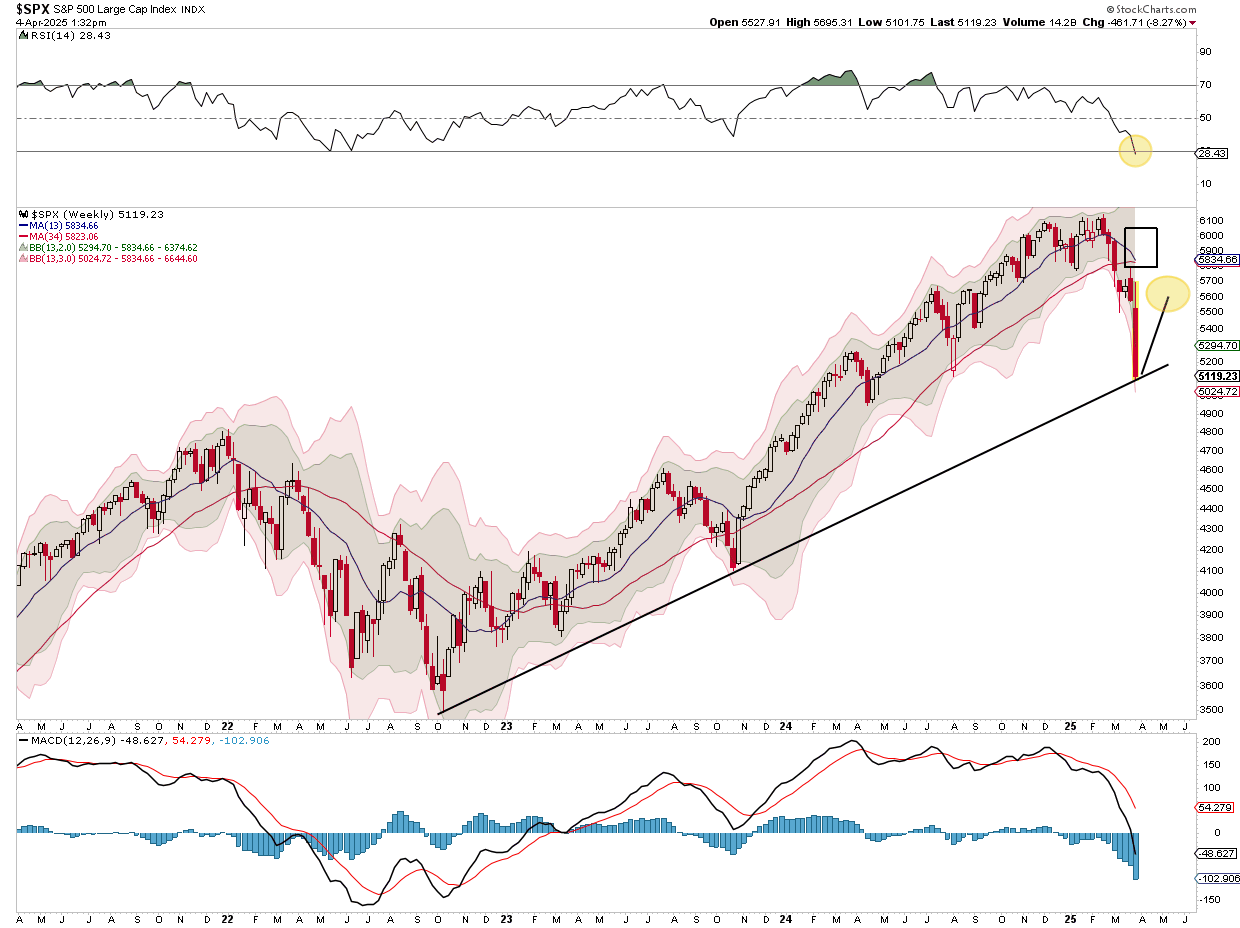U.S. futures subdued as government shutdown stretches into second week
While stagflation fears grip the market and make headlines, the bond market appears more concerned about ‘stag' than ‘flation.' Stagflation describes sluggish economic activity or a recession coupled with higher prices and rising unemployment. The ‘stag’ refers to a stagnant economy, while the ‘flation’ is inflation. Please read our article, Stagflation Panic: A Misdiagnosed Media Spin, for more on stagflation.
Most often, weak economic activity (‘stag’) reduces the demand for goods and services. Consequently, many factors impacting inflation tend to ease. Thus, stagflation is difficult to achieve unless there are unusual circumstances. Today, the broad concern is that despite weakening economic activity, inflation will remain high due to tariffs and fears that recent inflationary pressures haven’t disappeared.
While that may be a media concern and is certainly showing up in consumer and corporate surveys, the bond market seems to think the ‘stag' in stagflation is a risk but not ‘flation. Over the last few weeks, the 2-year Treasury yield has fallen by over 75bps, indicating that the market thinks growth is slowing and the Fed will cut rates.
If inflation were a concern, the market would not be aggressively pricing in Fed cuts. The graph below shows that longer-term inflation, measured by the 5×5 forward rate (five-year inflation, five years from now), is also declining and becoming aligned with pre-pandemic levels.
What To Watch Today
Earnings
- No notable earnings releases today
Economy

Market Trading Update
Last week, we discussed that with the magnitude of the recent selloff, we expect a sizable rally soon. While such a rally will undoubtedly make investors more bullish on the markets, we will use that rally to reduce portfolio volatility until a more durable market bottom is identified. As noted, we are triggering an important weekly sell signal.
Still, the markets are simultaneously three standard deviations below their longer-term moving average and challenging the rising trend line from the October 2022 lows. Such oversold conditions typically precede short-term rallies, allowing us to reduce exposure to equities between 5500 and 5700. While the rally could be more significant, we will use those levels to begin risk reductions.
Our primary focus on this process will be:
- Reduce current positions by 1/4 to 1/2 of their current target weights.
- Increase cash levels
- Raise stop loss levels on long-term positions.
- Sell positions that have technically violated previous support levels or exceeded risk tolerances.
- Add to positions that are positioned to benefit from further market stress.

Following those actions, we will continue to monitor and adjust the portfolio accordingly. At some point, the valuation reversion will be complete, allowing us to reconfigure portfolio allocations for a more bullish environment. When that event occurs, we will reduce fixed income, shift income allocations to corporate bonds rather than government bonds, and overweight equity allocations in portfolios.
However, that is a conversation we will have in more detail in the future. For now, market conditions remain uncertain. Preparing and adjusting strategies can help investors navigate volatility confidently. As technical indicators flash warning signs, a well-structured risk management approach will protect capital and preserve long-term gains.
The Week Ahead And Latest Employment Report
Payroll growth was strong at +228k, almost double the expectations of +135k. The unemployment rate rose from 4.1% to 4.2%. The problem with this report and others coming over the next few weeks is that they are old news. The market is focused more on forecasting how the tariffs will impact the economy in the summer months.
Tariffs, tariffs, and tariffs will be the most impactful news for markets this week. Investors hope that Trump will be willing to negotiate lower tariffs. However, as we saw on Friday, the risk is that nations combat tariffs with retaliatory tariffs and potentially inflame Trump, making matters worse.
Wednesday will feature the FOMC minutes. These may provide an update on the Fed’s latest thinking regarding how tariffs might affect the economy and prices. CPI will also be watched closely on Thursday, and PPI will be on Friday. While essential data, they may be overlooked as investors wait to see how recent geopolitical actions will impact prices.
Similarly, with earnings reports starting in earnest next week, we suspect forward-looking statements will be more important than prior quarter financial data.
